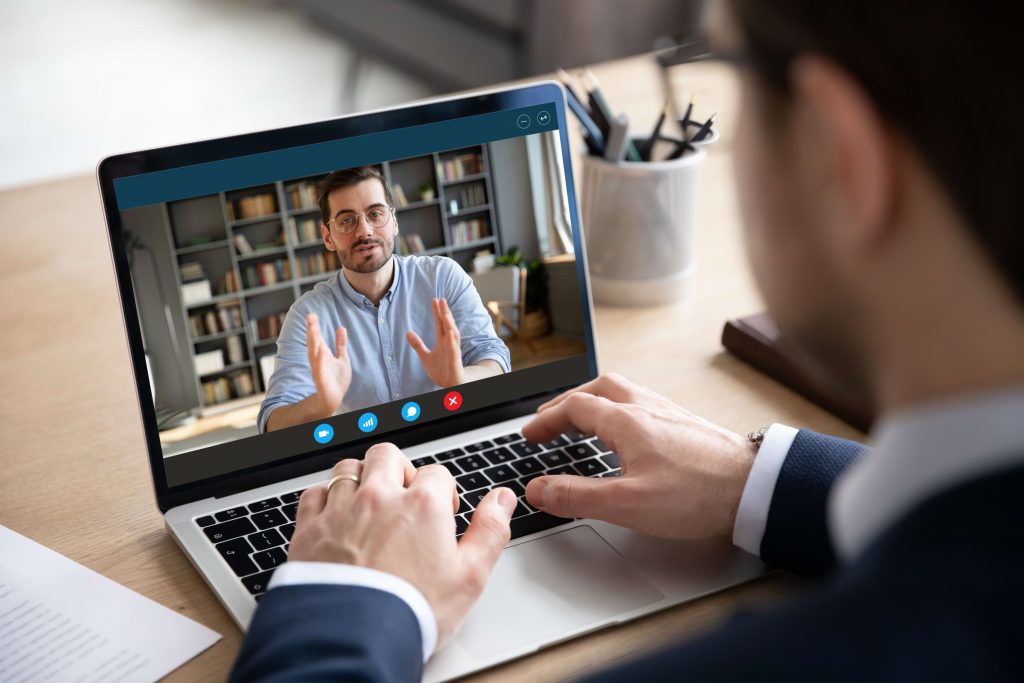The term “webinar” was coined sometime in the late 1980’s/early 1990’s[1]. Combining the terms “web” and “seminar”, it refers to a live, online event that is conducted over the internet. Webinars are used for various purposes, such as educational workshops, training sessions, product demonstrations, virtual conferences, and marketing events.
In a typical webinar, a presenter or a group of presenters deliver a presentation, often with visual aids like slides or videos, to a virtual audience. Participants can join the webinar from their own computers or mobile devices, no matter their location, and interact with the presenter(s) through features like chat, polls, Q&A sessions, and sometimes even video and audio communication.
Webinars provide an excellent platform for businesses, educational institutions, and organizations to reach a broader audience without requiring physical attendance. They enable real-time communication, engagement, and knowledge-sharing, making them a popular choice for remote learning, sales presentations, and professional development. For the purposes of this blog, we are focusing on the effectiveness of webinars as marketing tools for your business.

Why is a webinar an effective marketing tool?
Engagement and Interactivity: webinars allow for real-time interaction between presenters and participants. Attendees can ask questions, participate in polls, and engage in live discussions, which creates a more engaging and interactive experience compared to traditional marketing methods.
Lead Generation: to attend a webinar, participants often need to register with their contact information, providing an opportunity for businesses to capture leads. This data can be used for follow-up marketing efforts.
Demonstrate Expertise: hosting a webinar allows businesses and professionals to showcase their knowledge, skills, and expertise in their field. Providing valuable content during the webinar can establish the presenter as a thought leader, increasing credibility and trust among the audience.
Product and Service Promotion: webinars offer a platform to demonstrate and promote products or services effectively. Companies can showcase their offerings, highlight unique features, and address potential customer concerns or questions directly.
Provincial or National Reach: Unlike in-person events, webinars have no geographical limitations. They can reach a target audience (anywhere!), enabling businesses to connect with potential customers worldwide.
Cost-Effectiveness: hosting a webinar can be more cost-effective than organizing a physical event, as it eliminates expenses related to venue rentals, travel, and catering.
Measurable Results: webinars provide valuable data and analytics, such as attendance rates, engagement levels, and conversion rates. This information helps marketers measure the success of the event and identify areas for improvement.
Building Relationships: webinars facilitate a personal connection between presenters and participants. Building relationships with the audience can lead to increased brand loyalty and customer retention.
Versatility: webinars can serve various marketing purposes, such as product launches, training sessions, thought leadership events, and customer onboarding. Their versatility allows marketers to tailor their content to specific goals.
Reusability: webinars can be recorded and repurposed as on-demand content. This way, even those who missed the live event can access the material, extending the marketing impact beyond the initial live broadcast.

What are the top six best practices for a successful webinar?
- Set Clear Goals: define the specific objectives of your webinar. Whether it’s lead generation, product demonstration, or educational content, having clear goals will help you tailor the content to meet those objectives.
- Plan and Rehearse: plan your webinar carefully, including the agenda, content flow, and timing. Rehearse the presentation to ensure smooth delivery and identify any potential issues. You also want to have the presenter(s) practice their parts so that they appear authentic and personable.
- Engaging Content: create engaging and visually appealing slides or multimedia content to support your presentation. Use a mix of text, images, videos, and interactive elements to keep participants interested.
- Promote the Webinar: use various marketing channels to promote your webinar and attract attendees. Utilize email marketing, social media, website banners, and partnerships to reach a wider audience.
- Test Technology and Equipment: ensure that all your webinar tools, such as the platform, microphone, camera, and screen sharing, are working correctly. Conduct a test run to check for any technical issues beforehand. Also, plan for additional set up time to make sure everything is working properly the day of.
- Measure Results: analyze the webinar’s performance using data such as attendance rates, engagement metrics, and conversion rates. Use these insights to assess the webinar’s success and identify areas for improvement.
At Directwest, we present four webinars each year. To look back at some of our past topics visit our YouTube page. Coming in October we’ll be presenting a webinar on the effectiveness of advertising with Spotify. If you don’t receive an invitation by mid-September, reach out and we‘ll be happy to send you an invite!
-Sarah Elchuk is a Product Consultant on the Revenue Growth Team at Directwest.
[1] https://trueconf.com/webinar.html#:~:text=Back%20in%201997%2C%20Auditorium%20allowed,web%E2%80%9D%20and%20%E2%80%9Cseminar%E2%80%9D.